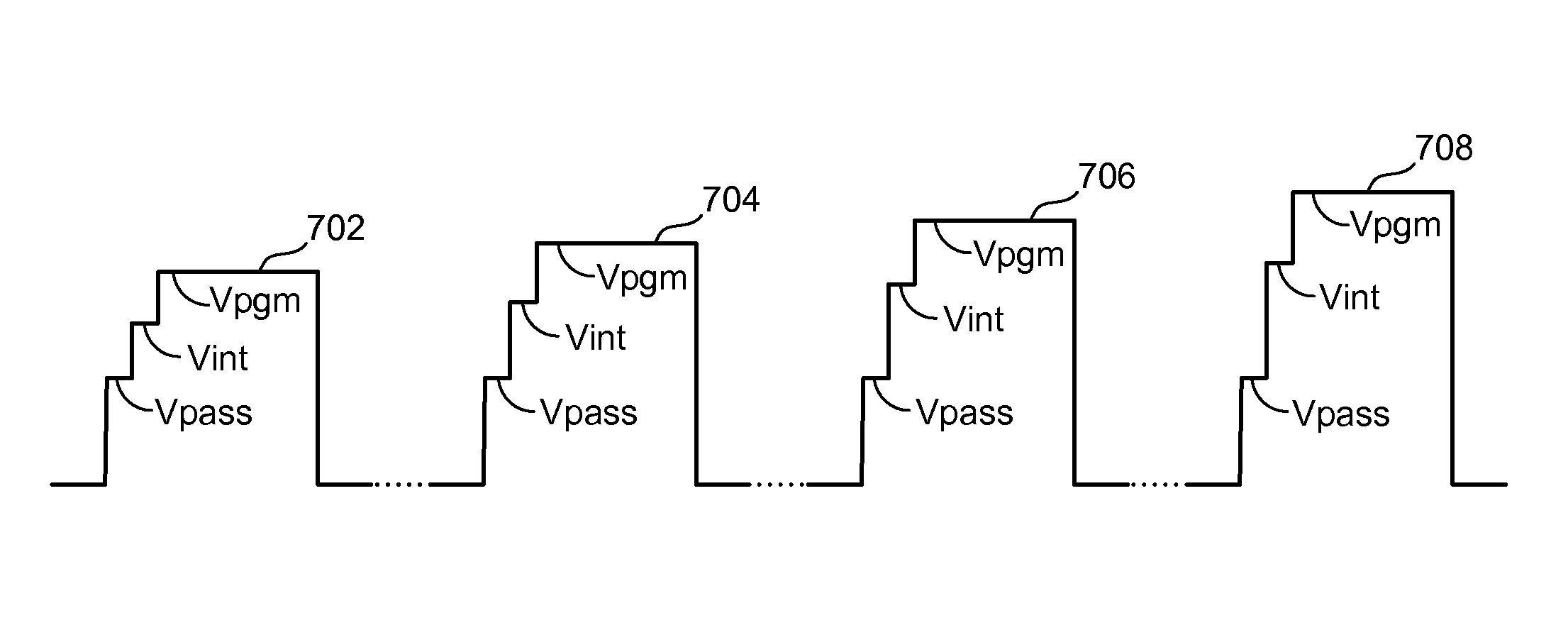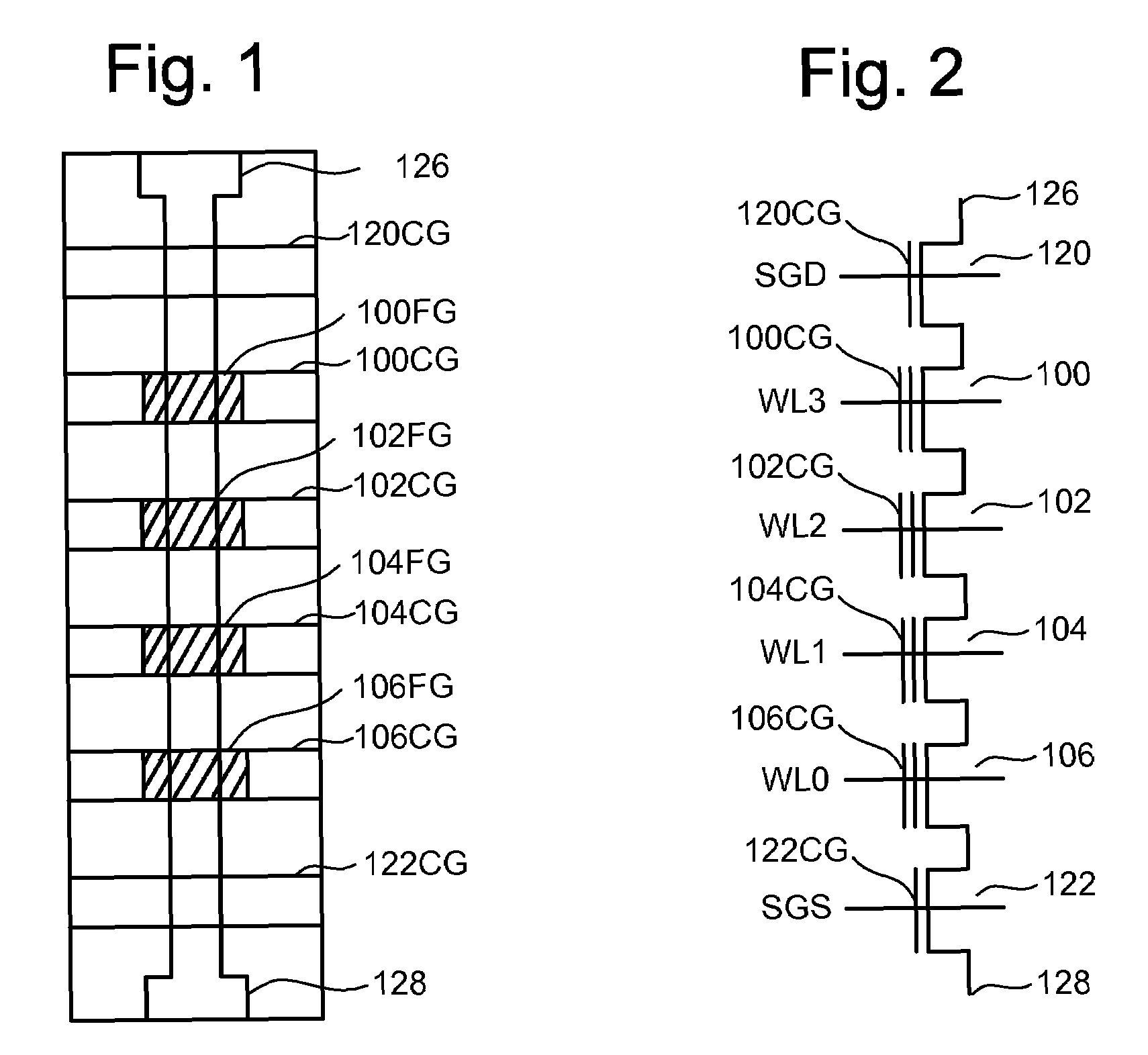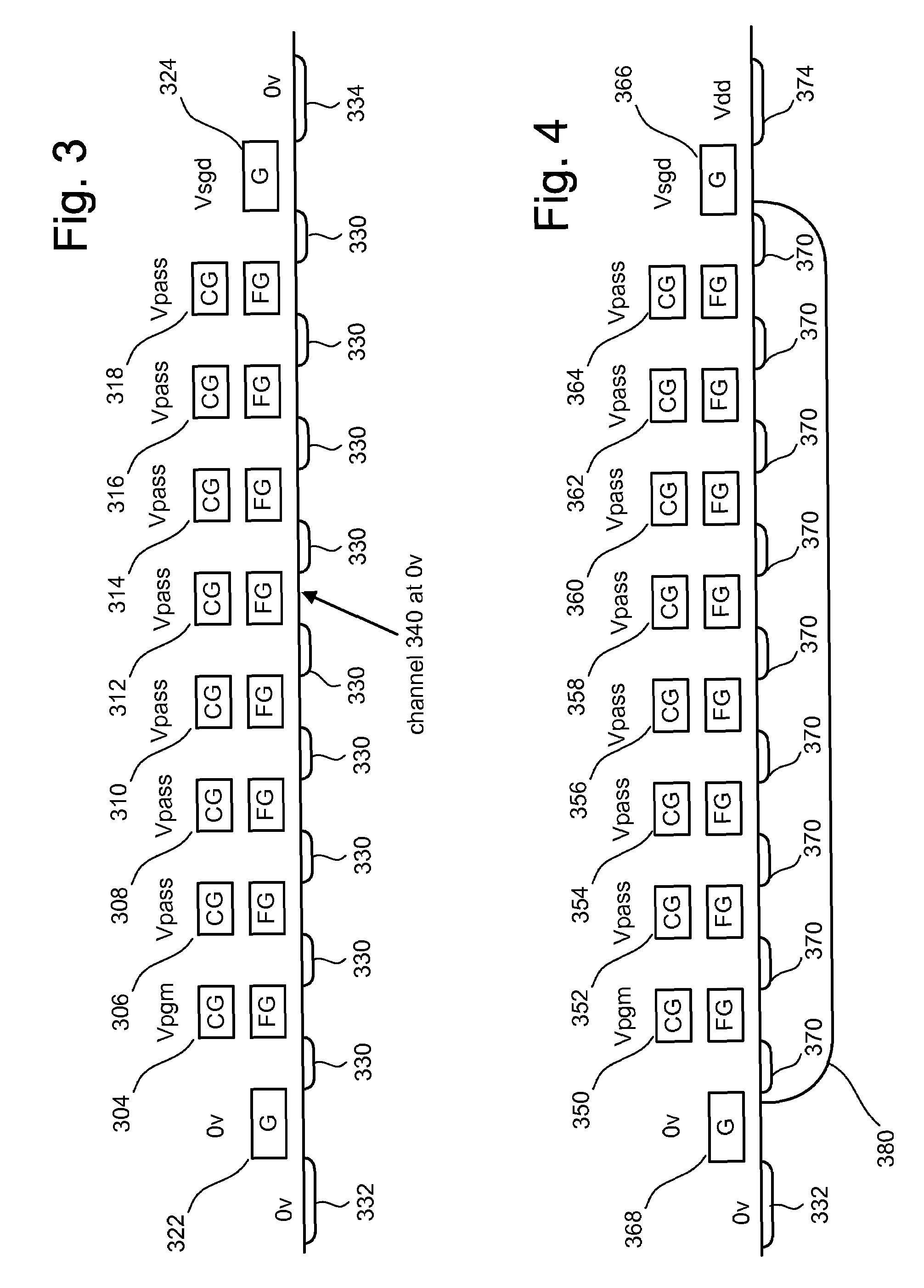Method for using transitional voltage during programming of non-volatile storage
a technology of transitional voltage and programming method, applied in the field of non-volatile storage, can solve problems such as the programming of selected non-volatile storage elements, and achieve the effect of reducing program disturban
- Summary
- Abstract
- Description
- Claims
- Application Information
AI Technical Summary
Benefits of technology
Problems solved by technology
Method used
Image
Examples
Embodiment Construction
[0053]One example of a memory system suitable for implementing the present invention uses the NAND flash memory structure. However, other types of non-volatile storage devices can also be used.
[0054]FIG. 6 illustrates a memory device 396 having read / write circuits for reading and programming a page of memory cells in parallel, according to one embodiment. Memory device 396 may include one or more memory die 398. Memory die 398 includes a two-dimensional array of memory cells 400, control circuitry 410, and read / write circuits 465. In some embodiments, the array of memory cells can be three dimensional. Memory array 400 is addressable by word lines via row decoder 430 and by bit lines via column decoder 460. Read / write circuits 465 include multiple sense blocks 500 and allow a page of memory cells to be read or programmed in parallel. A controller 450 can be included in the same memory device 396 (e.g., a removable storage card) as the one or more memory die 398. Commands and Data ar...
PUM
 Login to View More
Login to View More Abstract
Description
Claims
Application Information
 Login to View More
Login to View More - R&D
- Intellectual Property
- Life Sciences
- Materials
- Tech Scout
- Unparalleled Data Quality
- Higher Quality Content
- 60% Fewer Hallucinations
Browse by: Latest US Patents, China's latest patents, Technical Efficacy Thesaurus, Application Domain, Technology Topic, Popular Technical Reports.
© 2025 PatSnap. All rights reserved.Legal|Privacy policy|Modern Slavery Act Transparency Statement|Sitemap|About US| Contact US: help@patsnap.com



